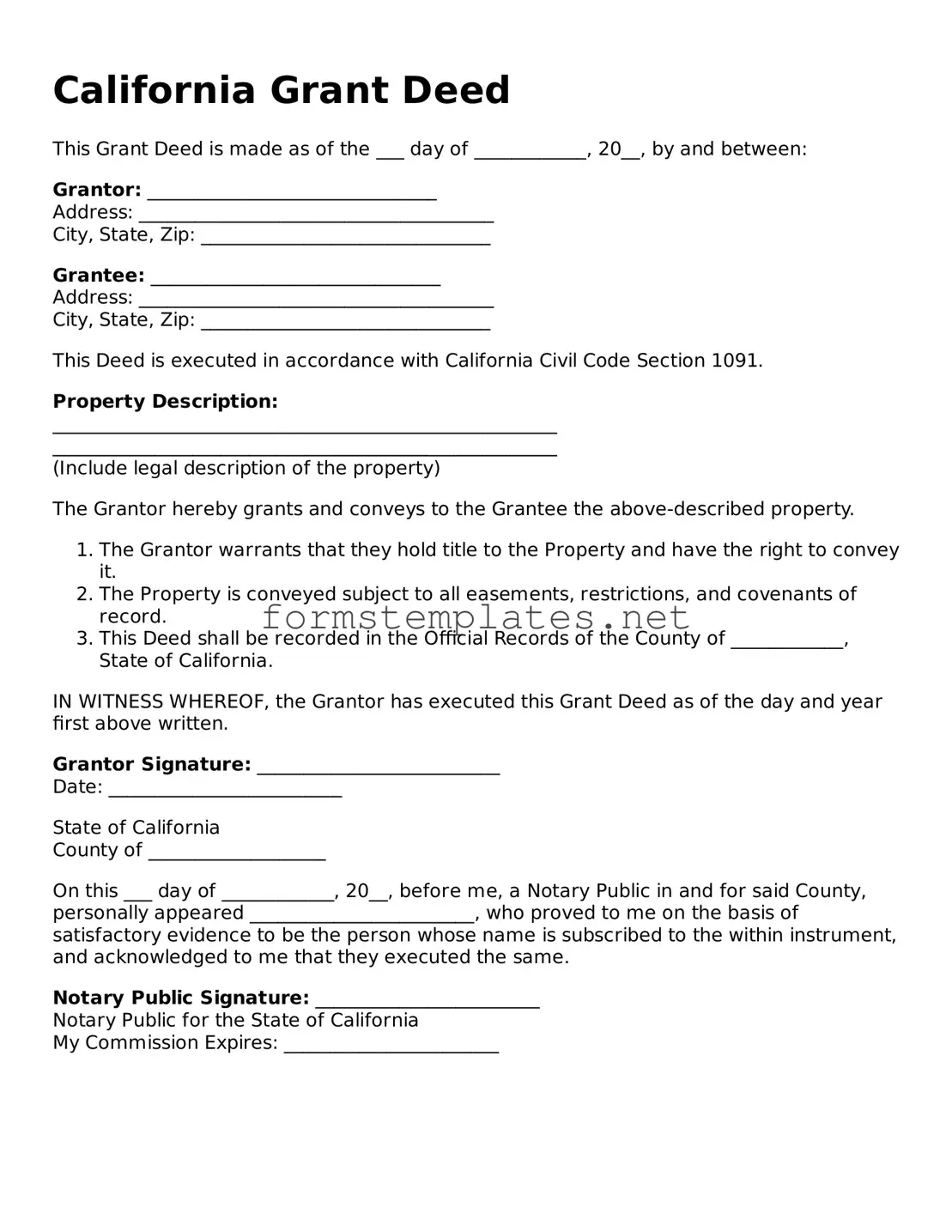California Grant Deed
This Grant Deed is made as of the ___ day of ____________, 20__, by and between:
Grantor: _______________________________
Address: ______________________________________
City, State, Zip: _______________________________
Grantee: _______________________________
Address: ______________________________________
City, State, Zip: _______________________________
This Deed is executed in accordance with California Civil Code Section 1091.
Property Description:
______________________________________________________
______________________________________________________
(Include legal description of the property)
The Grantor hereby grants and conveys to the Grantee the above-described property.
- The Grantor warrants that they hold title to the Property and have the right to convey it.
- The Property is conveyed subject to all easements, restrictions, and covenants of record.
- This Deed shall be recorded in the Official Records of the County of ____________, State of California.
IN WITNESS WHEREOF, the Grantor has executed this Grant Deed as of the day and year first above written.
Grantor Signature: __________________________
Date: _________________________
State of California
County of ___________________
On this ___ day of ____________, 20__, before me, a Notary Public in and for said County, personally appeared ________________________, who proved to me on the basis of satisfactory evidence to be the person whose name is subscribed to the within instrument, and acknowledged to me that they executed the same.
Notary Public Signature: ________________________
Notary Public for the State of California
My Commission Expires: _______________________
